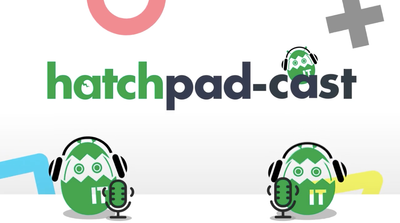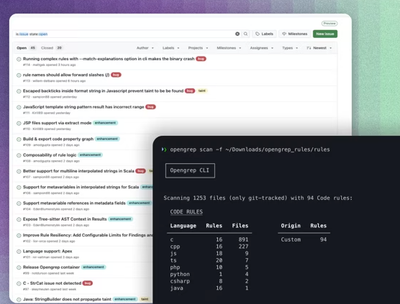
Research
Security News
Lazarus Strikes npm Again with New Wave of Malicious Packages
The Socket Research Team has discovered six new malicious npm packages linked to North Korea’s Lazarus Group, designed to steal credentials and deploy backdoors.
choicesjs-stencil
Advanced tools
Select and multi-select Web Component using ChoicesJS library as core

Select and multi-select Web Component which transforms ChoicesJS library into a real Web Component.
This component allows the user to select from dropdowns, to browser between multiple options, to add tags to an input, etc.
Play with it on the demo page.
It is built with StencilJS, and written in Typescript and JSX.
The purpose of this project is to create a simple Web Component wrapper from the ChoicesJS library.
All the available use cases of the original library can be perform using this Web Component.
For more information read the library documentation.
[NodeJS and NPM][node] are required to work with the repository.
The library is based on ChoicesJS, but it is not bundle along with the wrapper. It has been defined as part of peerDependencies, therefore it has to be included in your own dependencies.
This dependency can be added to the bundle as external library, or it can just be added to the page via GitHub script:
<script src="https://cdn.jsdelivr.net/npm/choices.js@9.0.1/public/assets/scripts/choices.js"></script>
This component is available via NPM.
npm install choicesjs-stencil
Include the component in your application via HTML script:
<script src="choicesjs-stencil/dist/choicesjsstencil.js"></script>
Use it as a new HTML element in your template:
<choicesjs-stencil values="foo,bar"></choicesjs-stencil>
To be able to work with the component in a form it needs a name:
<form name="form">
<choicesjs-stencil name="select" values="foo,bar"></choicesjs-stencil>
</form>
The component is also available as module to be loaded via module bundler:
require('choicesjs-stencil');
Some of this component properties must be set via JavaScript (non primitive types). As well as properties, the component provides public methods and events (see the library documentation).
<choicesjs-stencil type="single"></choicesjs-stencil>
<script>
var element = document.querySelector('choicesjs-stencil');
element.choices = [
{
value: '',
label: 'Pick an item...',
placeholder: true
}, {
value: 'foo',
label: 'Foo'
}, {
value: 'bar',
label: 'Bar'
}, {
value: 'qux',
label: 'Qux'
}
];
element.disable();
</script>
It is a good decision to create a wrapper of the Web Component to be ready to use by the application framework.
The wrapper has to cover at least:
type: type of selector (see values in configuration section).choices: values to display in the selector.name?: name of the element (recommended).choices property to update the values of choices in the Web Component:change event of the Web Component to be able to propagate it.// Loading ChoicesJS library and ChoicesJS Stencil Web Component
import 'expose-loader?Choices!choices.js';
import { defineCustomElements } from 'choicesjs-stencil/dist/loader';
defineCustomElements(window);
// VueJS component
<template>
<choicesjs-stencil class="choicesjs-stencil"
:type="type"
:name="name"
...
/>
</template>
<script>
export default {
props: [ 'type', 'name', 'choices' ],
watch: {
choices: {
immediate: true,
handler(newChoices, oldChoices) {
const select = this.$el;
if (select && oldChoices !== newChoices) {
select.choices = newChoices;
}
}
}
},
mounted() {
const select = this.$el;
select.choices = this.choices;
select.addEventListener('change', () => this.$emit('change'));
}
};
</script>
// Loading ChoicesJS library and ChoicesJS Stencil Web Component
import 'expose-loader?Choices!choices.js';
import { defineCustomElements } from 'choicesjs-stencil/dist/loader';
defineCustomElements(window);
// ReactJS component
import React, { useEffect, useRef } from 'react';
export default function ChoicesJSStencil({
type = 'text',
name,
choices = [],
onChange
}) {
const choicesElement = useRef(null);
useEffect(() => {
const { current } = choicesElement;
const _handleChange = handleChange.bind(null, onChange);
current.choices = choices;
current.addEventListener('change', _handleChange);
return () => {
current.removeEventListener('change', _handleChange);
};
}, [ choices ]);
async function handleChange(callback) {
const { current } = choicesElement;
callback({
options: await current.getValue(true),
target: current
});
}
return (
<choicesjs-stencil class="choicesjs-stencil"
ref={ choicesElement }
type={ type }
name={ name } />
);
}
type: the type of selector to render, defaults to text. Options: text, single, multiple.items: a list of preselected values for text type select. It must be set via JavaScript.choices: a list of available values for single and multiple type selects. It must be set via JavaScript.Additionally, more options can be set, check the documentation for further details.
Chrome (and all Chrome based browsers), Safari, Firefox and Edge (IE11 is also supported).
Open index.html file after running npm run build.
To contribute to this project it is necessary to work with NodeJS v8 or later.
Install dependencies:
npm install
Run npm run build to build the minified version (the same as npm run build:min).
Also, if you want to work with the library and have it live built, you can run npm run build:dev which creates a live server ready to be used: http://localhost:3333/.
The example is located in src/index.html.
The development server is included:
npm run start
<rootDir>/
├── dist/ (distribution folder)
├── docs/ (generated documentation)
├── [example]/ (files to use the public demo)
├── src/ (sources folder)
│ ├── components/ (folder with the different components)
│ │ └── [name]/ (folder for a component)
│ ├── [components.d.ts] (autogenerated file with types for the components)
│ └── index.html (dev index)
├── test/ (test folder)
│ ├── specs/ (test scripts)
│ │ └── TEST-TYPE/
│ └── results/ (test results)
│ └── TEST-TYPE/
├── [www]/ (autogenerated dev server directory)
├── index.html (public demo)
├── jest.config.js
├── stencil.config.js
├── tsconfig.json
├── tslint.json
├── package.json
├── README.md
└── ...
Jest is the test tool, it is run via scripts:
npm run test
npm run test:TYPEnpm run test:coverage
npm run test:coverage:TYPETest results found in tests/results/TYPE/coverage folder.
npm run lintGenerate documentation with typedoc: npm run doc
Documentation found in docs folder.
Check the contributor list and you will be welcome if you want to contribute.
Check out the CONTRIBUTING.md to know how to contribute to this project.
© adidas AG
adidas AG publishes this software and accompanied documentation (if any) subject to the terms of the MIT license with the aim of helping the community with our tools and libraries which we think can be also useful for other people. You will find a copy of the MIT license in the root folder of this package. All rights not explicitly granted to you under the MIT license remain the sole and exclusive property of adidas AG.
NOTICE: The software has been designed solely for the purpose of wrapping the ChoicesJS library as Web Component. The software is NOT designed, tested or verified for productive use whatsoever, nor or for any use related to high risk environments, such as health care, highly or fully autonomous driving, power plants, or other critical infrastructures or services.
If you want to contact adidas regarding the software, you can mail us at opensourcesoftware@adidas.com.
For further information open the [adidas terms and conditions][terms-and-conditions] page.
1.5.1
Added ReactJS documentation.
Updated project description and documentation.
Updated demo adding repository link.
Fixed external links with rel="noopener".
Updated choices.js to version 9.0.1.
Updated @stencil/core to version 1.12.7.
Updated demo application.
Changed web component interface:
ClassNames:
selectedState.hiddenState.itemOption with itemChoice.FuseOptions (fusejs.io updates from 2.7.4 to version 3.4.6):
includeMatches.includeScore.findAllMatches.sortFn.getFn.IchoicesProps:
uniqueItemText.customAddItemText.valueComparer.addItemFilterFn with addItemFilter (it allows string and RegExp types).sortFn with sorter.IChoicesMethods:
ajax method.FAQs
Select and multi-select Web Component using ChoicesJS library as core
The npm package choicesjs-stencil receives a total of 170 weekly downloads. As such, choicesjs-stencil popularity was classified as not popular.
We found that choicesjs-stencil demonstrated a not healthy version release cadence and project activity because the last version was released a year ago. It has 1 open source maintainer collaborating on the project.
Did you know?

Socket for GitHub automatically highlights issues in each pull request and monitors the health of all your open source dependencies. Discover the contents of your packages and block harmful activity before you install or update your dependencies.

Research
Security News
The Socket Research Team has discovered six new malicious npm packages linked to North Korea’s Lazarus Group, designed to steal credentials and deploy backdoors.

Security News
Socket CEO Feross Aboukhadijeh discusses the open web, open source security, and how Socket tackles software supply chain attacks on The Pair Program podcast.

Security News
Opengrep continues building momentum with the alpha release of its Playground tool, demonstrating the project's rapid evolution just two months after its initial launch.